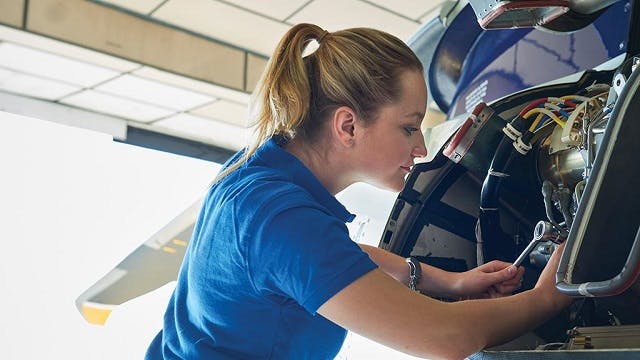Industry trends are pushing companies in the aerospace and defense sector to make changes. This is related to the pressure to reduce the program cost and schedule, the increasing complexity of aircraft, supply chain bottlenecks and a shrinking workforce. The combination of these trends is causing exponential increases in the risk and costs associated with these products. This leads companies to constantly look for new solutions to address these changes.
To overcome these challenges, companies are undergoing a digital transformation. Capital™ software, part of the Siemens Xcelerator portfolio, provides a complete model-based solution for E/E system development, supported by a virtual twin. The end-to-end process covers the entire product lifecycle from early design to production and service domains, accelerating ramp-up and ensuring traceability at every stage.
But what does this mean for wire harness manufacturing?
Efficient wire harness manufacturing with a digital twin
Wire harness manufacturers must constantly balance quality, delivery and cost targets while managing complexity and reducing these risks. As it is impossible to eliminate risk, companies must focus on managing it effectively.
Traditional wire harness manufacturing methods rely heavily on manual processes. The process typically consists of three basic steps: cutting the cables, shaping the wire harness on the formboard and assembling the connectors. An element often underestimated in creating an efficient manufacturing process is a correctly designed formboard. Its proper design enables operators to work productively and manufacture a wire harness right the first time.
Classical MCAD drawing methods in isolation from wire harness data make the creation process long and prone to many errors. Making changes is cumbersome and does not guarantee their correct management, with the inappropriate selection of components increasing the cost of implementation.
In this webinar, you will find out how to use the digital twin to create a cost-effective and ergonomic formboard.
Poznaj naszego eksperta

Bartosz Czarnecki
Kierownik produktu i lider produkcji okablowania
Cała dotychczasowa 17-letnia kariera zawodowa Bartosza Czarneckiego jest związana z okablowaniem elektrycznym. Od samego początku był związany z branżą lotniczą i kosmiczną na różnych stanowiskach: od operatora elektrycznego, przez inżyniera procesów, po kierownika ds. inżynierii produkcji. Wszystkie te role dotyczyły obszaru okablowania elektrycznego. Część swojej kariery zawodowej poświęcił zwłaszcza branży kosmicznej: ze względu na specyfikę dziedziny zajmował się nie tylko inżynierią produkcji, wytwarzaniem i testowaniem okablowania, lecz także jego projektowaniem. Uzyskał stopień magistra elektrotechniki na Politechnice Radomskiej.
